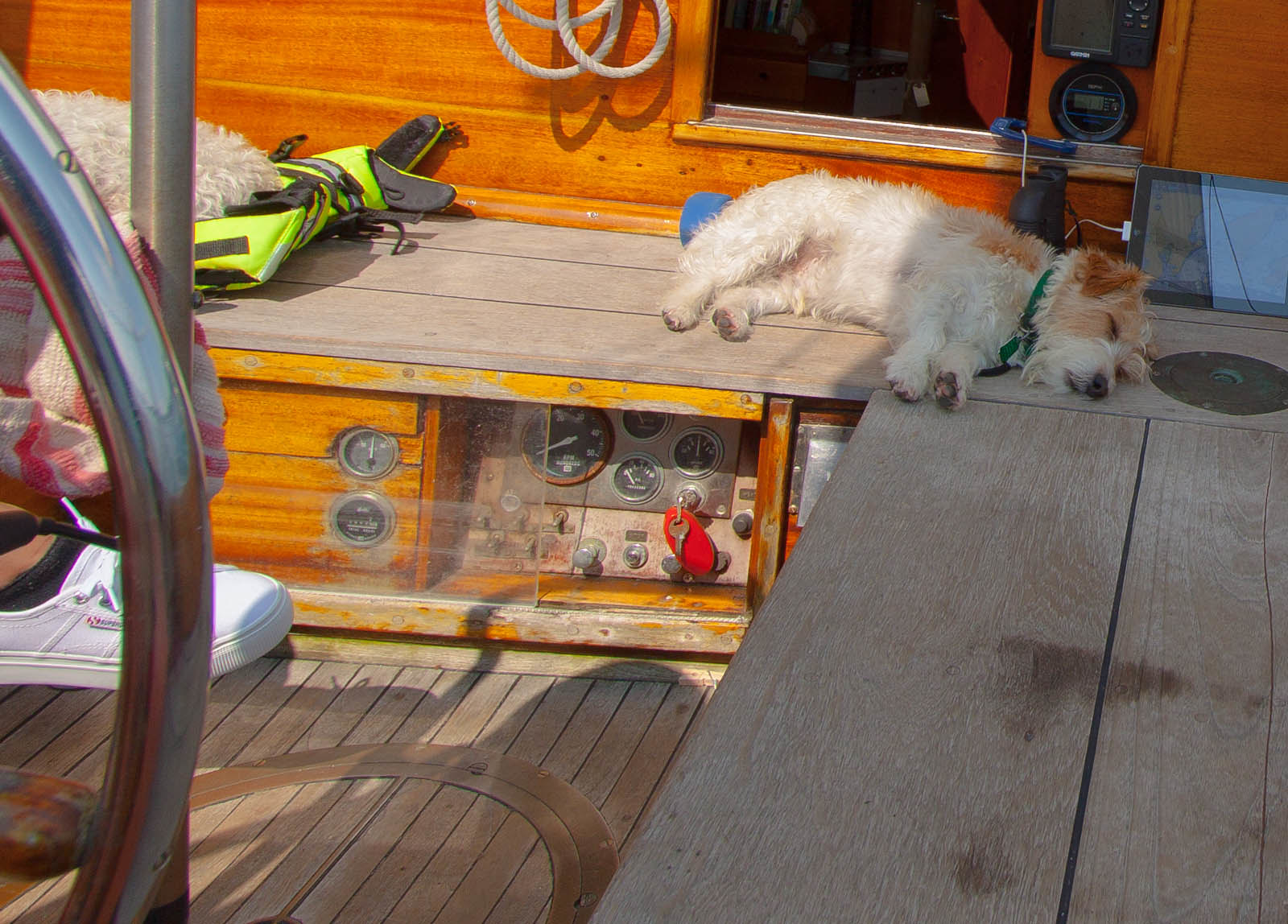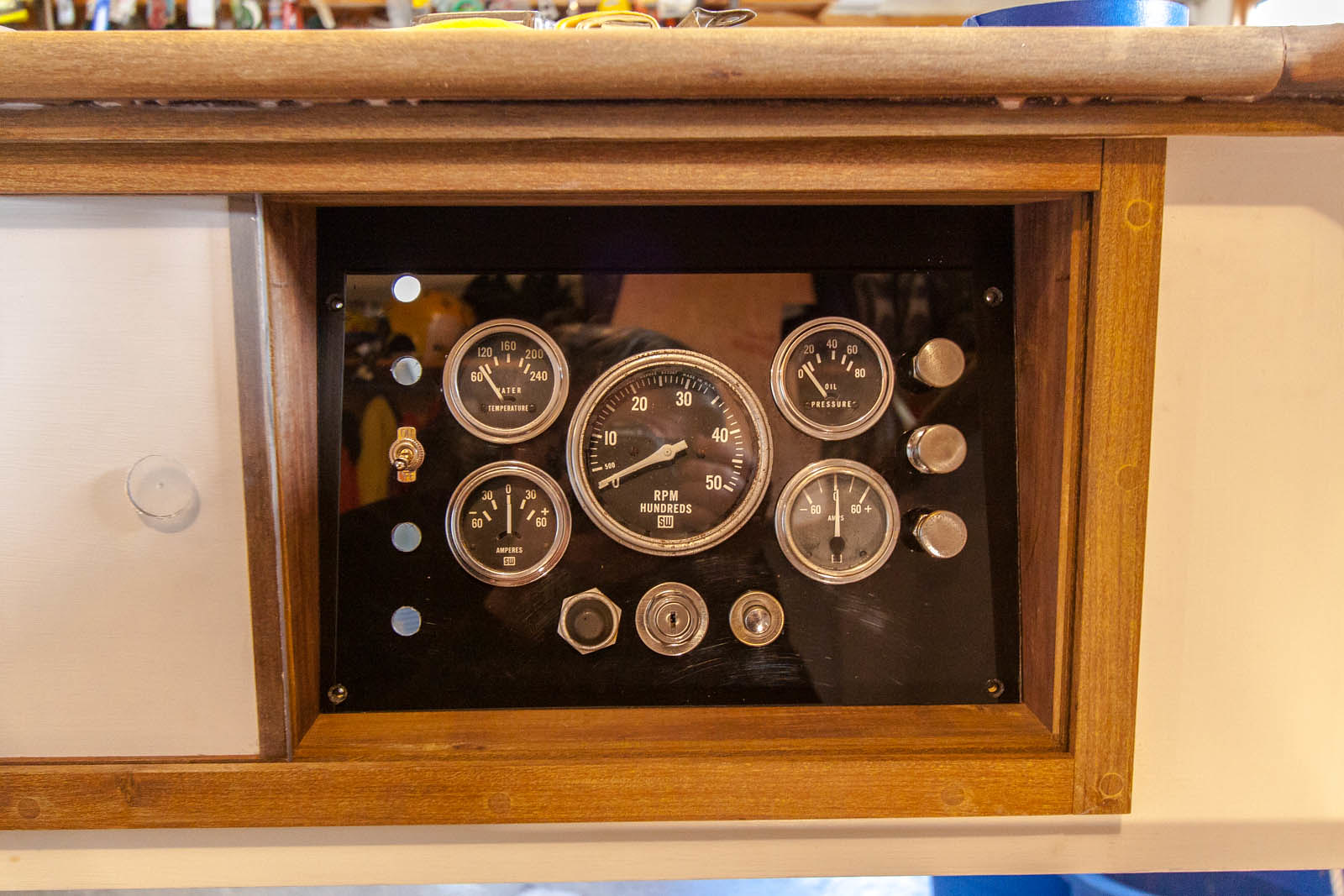Cruising Sailors Forum Archive
zzzzzzzzzzzz........
Here's the only photo I can find of my old one (I've destroyed it and forgot to take the 'before' - as usual). I assume this is the original set up from 1961 when the boat was delivered with a Graymarine gas engine. Then a few changes in 1974 with a replacement Nissan diesel, but using what was there. A typical old boat train wreck.

I couldn't find any design help on the web so I decided to try 'intuitive' design. Working on paper first, I came up with this plan that made sense in my head.
The tachometer - like the boats engine - takes the center of the panel.
2" gauges - upper tier - Temperature and Oil Pressure. I've installed this engine myself (2007), so I 'see' it in the boat. On the port side (looking forward from the helm), is the water cooled exhaust manifold and coolant reservoir. On the starboard side is the oil pump, filter and dipstick.
2" gauges - lower tier. The Ampere gauges (I hope Mainesail doesn't see this ![]() ) Gauges coincide with batteries: On the port side is the engine starting battery. On the starboard side is the house bank batteries.
) Gauges coincide with batteries: On the port side is the engine starting battery. On the starboard side is the house bank batteries.
Switches: Lower/center group-starting. Ignition key in the middle. Start - from left/port - glow plug solenoid push switch. Finish on right/starboard-fuel STOP solenoid push switch.
Port group of 5 vertical toggle switches(have to buy them): Rarely using running lights, I've never been able to intuitively flip the old switches. So this was easy to lay out(for my brain):
Top of the mast down: Top switch 1-Mast Head, 2-Steaming light, 3-Spreader lights, 4-Running lights, 5-engine panel lights.
Starboard group of 3 pull knob switches: These old pull switches look good on an older boat. ![]()
Bottom Pull - Alternator power(I like this disconnect even though I have a start delay on the regulator)
Middle Pull - Alternator High/Low (another personal preference on my belt burning Balmar alternator - it simply engages the overheat setting of 50% output )
Top - There for balance. I'll find a need for it.
At the top of the new panel, I have space for another 2" gauge(I can't imagine a need ), the 12 volt receptacle(I need to pick one up to see the hole size) and space for a few more switches, if needed.

The Lexan panel worked out well enough. It will scratch(the bottom that looks like scratches is a reflection from the light I had pointed at the panel), but I had the scrap. I've decided to wire it as fully as I can - in the shop - leaving pigtails that I'll connect to the wiring harness on the boat. The clock is ticking more loudly,...

Messages In This Thread
- I'd like to talk to you about sailboat diesel engine panels,...

- Here's my take.....
- Looks great Tom
- I wish I could sleep as well as a happy dog

- Hour meter...
- I may add one but I can't normally put on a hundred hours in a season. So engine stuff is annually
- My boat came with a failed hour meter
- I may add one but I can't normally put on a hundred hours in a season. So engine stuff is annually
- Looks very nice, Tom
- Yes I have the old fashioned Cheroble type of Amp meters. Check out my wiring. ABYC
- NICE!

- Thanks. The best part of this project, is what goes away. Here's the old panel hole and wire chase.
- Looks much like the mess I've been dealing with, Tom.

- On your boat or you Rover?

- Both, now that you mention it.

- Both, now that you mention it.
- On your boat or you Rover?
- Hey, salvage that nice Stewart Warner engine hour meter...

- I see the need for new.......it's gonna be so gorgeous!!

- Looks much like the mess I've been dealing with, Tom.
- Thanks. The best part of this project, is what goes away. Here's the old panel hole and wire chase.
- NICE!
- Yes I have the old fashioned Cheroble type of Amp meters. Check out my wiring. ABYC
- A nice fellow in Florida over on Sailnet, found a Hobbs Engine hour meter in his shop.